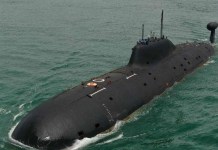In the last few days, American bombers have been hogging the limelight and receiving significant media attention due to two separate mid-air incidents.
After the deadly mid-air collision in Dallas, a B-52H at Minot Air Force Base, North Dakota, collided with a flock of birds. The US Air Force has initiated an investigation into the severity of the damage to the aircraft and its eight engines.
The incident, which seems to have been recorded on video and widely shared on social media, did not result in any fatalities. Air Force spokesperson Justin Oakes said, “I cannot confirm the relationship or origin of this video.”
Neither humans nor animals are safe from the US military!
Video shows the moment a US B-52 bomber hit a flock of birds in midair pic.twitter.com/qfMswwrXc1
— PressTV Extra (@PresstvExtra) November 11, 2022
According to a Facebook post by Andrew Tancabel, a wide-winged aircraft smashed through a flock of birds, which Tancabel assumed were Canada geese. A short while later, dark smoke seemed to billow from the jet’s four pairs of engines when the plane flew away from the camera.
Oakes refused to comment on how the plane’s crew handled the dangerous scenario. He stated that the bird strike is currently undergoing the standard safety investigation process to identify the bird species, assess the harm done to the aircraft, and determine whether any lessons can be drawn to prevent similar accidents in the future.
The Air Force Safety Center estimates that roughly 100 such accidents are reported annually, making bird strikes an occupational hazard for pilots. Even though the collisions might be severe, airmen are rarely killed in them.
Minot’s 5th Bomb Wing flies the long-range, nuclear-capable bomber for conventional combat and nuclear deterrence worldwide. The US Air Force has a fleet of 58 B-52s in service today, another 18 in reserve, and a dozen in long-term storage.
In 2016, a B-52H Stratofortress was lost in a fire immediately after an attempted takeoff was aborted owing to mechanical difficulties.
According to the Accident Investigation Board, “the cause of the mishap was that the pilot analyzed visual bird activity and perceived cockpit indications as a loss of symmetric thrust required to safely attain flight, and subsequently applied abort procedures.”

In the incident, one of the seven crew members received minor injuries.
The bomber “sustained total damage,” which cost the Air Force $112 million. Instruments on the airfield and approach illumination also sustained damage worth $1.5 million. No one was killed, and there was no damage to private property. However, the crew did suffer minor injuries as they exited the crashed plane on the ground.
Deadly Dallas Mid-Air Collision
During an air display on November 12 at Texas’ Dallas Executive Airport, two aircraft — a Boeing B-17 bomber and a smaller plane—collided mid-air. All six crew members were killed in the incident.
The B-17 Flying Fortress bomber and the P-63 Kingcobra fighter, the smaller aircraft, were involved in the incident. The two aircraft collided, exploding into a ball of flames and spreading black smoke into the air.
Multiple angles of the collision were captured on camera and posted online.
The dramatic film captured by airshow attendees shows the larger B-17 bomber flying straight and not very high, while a Bell P-63 Kingcobra can be seen swooping from the left.
Terrible mid-air collision over Dallas during a WW2 air show yesterday. Spectators capture a P-63 Kingcobra smashing into a B-17 Flying Fortress. pic.twitter.com/8rlH6T2jZR
— Shiv Aroor (@ShivAroor) November 13, 2022
The B-17, a World War II-era plane, and the smaller plane collide and promptly shatter into pieces, as shown in the video. The incident occurred at Dallas Executive Airport during the Wings Over Dallas Airshow.
Federal officials are investigating the accident involving a Bell P-63 Kingcobra with a single pilot colliding with a larger Boeing B-17 Flying Fortress.
The big four-engine bomber known as the B-17 was a mainstay of US air power during World War II and was deployed in daylight missions against Germany. During the conflict, Soviet forces largely deployed the Kingcobra fighter plane.
According to Boeing, most B-17s were destroyed at the end of World War II, and today, only a small number is mainly shown at museums and air shows. Air-shows’ safety issues have long been a significant concern, especially with older military aircraft.
In 2011, in Reno, Nevada, a P-51 Mustang crashed into spectators resulting in the deaths of 11 people. In 2019, seven people died in a bomber collision that occurred in Hartford, Connecticut.
During that time, the National Transportation Safety Board (NTSB) reported that it had looked into 21 accidents involving bombers from World War II that had resulted in 23 fatalities since 1982.
- Contact the author at ashishmichel@gmail.com
- Follow EurAsian Times on Google News




